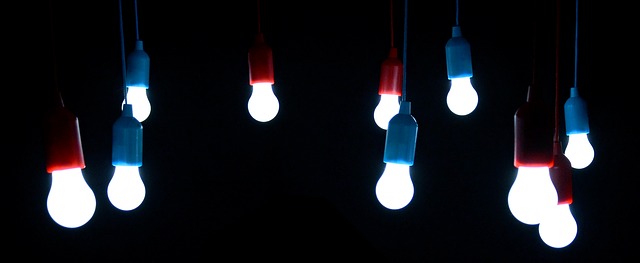Introduction
LED: Light-emitting diode
LED: A light-emitting diode is a light source emitting light when current flows through the semiconductor.
LED technology:
Light-emitting diodes are solid-state devices. The technology directly transforms electric energy into single-color light. In LED cold light generation technique is employed. Energy is not wasted in LED technology.
Advantages of LED Technology
There are many advantages of light-emitting diode technology, few are mentioned below.
Energy Efficiency: The LED light emits lumens per watt more than incandescent light bulbs. The energy efficiency of LED lights is not troubled by size and shape.
Single Color: The LED light can emit intended color light whereas traditional light needs color filters.
Varying Size: The LED comes in varying sizes. It can be small enough to get attached to the circuit board.
Warm-Up Time: The LED lights up immediately. It requires milliseconds to get full luminous.
On-Off Cycling: The LED is not affected by frequent on-off cycling.
Environmental Benefits of LED Technologies
LED technology is energy efficient and has environmental benefits.
The LED provides almost the same light by consuming less electricity. If conventional light is compared with LED light then the latter uses 85% less electricity than the former source. In the world, up to 20% of electricity is used for lighting.
The LED technology-based light consumes less power per unit. The greenhouse gases emission from power plants is reduced. A LED light usually releases less carbon dioxide. Almost half a ton of greenhouse gases emission will be reduced by one LED light.
The less replacement for light bulbs due to the longer lifespan of LED light will lead to reducing manufacturing process of light and ultimately less carbon emission into the air.
Also check out: What Is Light Pollution? – Sources, Effects and Solutions
Why We Should Opt for LED Technology?
The energy crisis is a serious issue in the world. Conventional light bulbs are responsible for noise and light pollution. These light sources are responsible for environmental pollution. Since LED products are less pollution-causing and require less energy to provide the same light then this is the favorable technology the world should opt for.
Conclusion
The research on further improvement of Light-emitting diode technology is still ongoing. Millions are being spent on the development of LED sources. LED lights are lower in price and on-off cycling can be managed by smartphone. The longer life span of LED light makes it environmentally friendly. It doesn’t waste energy like conventional light bulbs.
Recommendation
Because the LED light consumes less electricity, it is ideal for household use. Energy crisis issues could be resolved by energy-efficient sources. The LED is an environmentally friendly energy source than other light bulbs. This technology can be used for commercial and industrial purposes. Huge savings can be made by employing LED technology.
Also, check out Scatec & Nizam Energy End Funding for Solar Power Plant in Pakistan
I hope you all liked this post! Please comment below if you have any suggestions, comments, or feedback! We at #envpk love hearing from our readers! Thanks!




